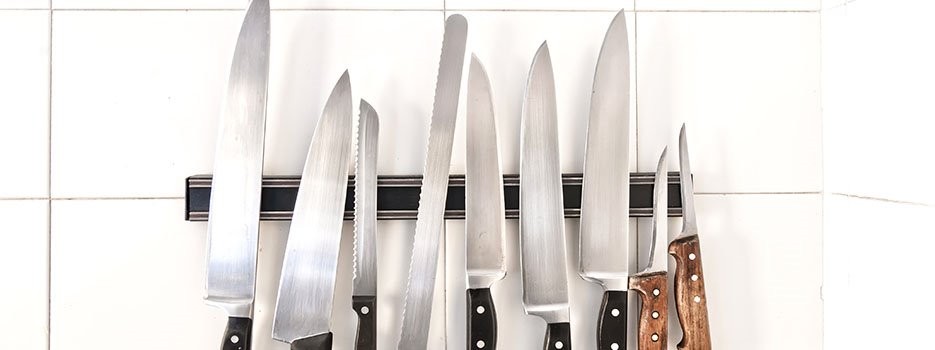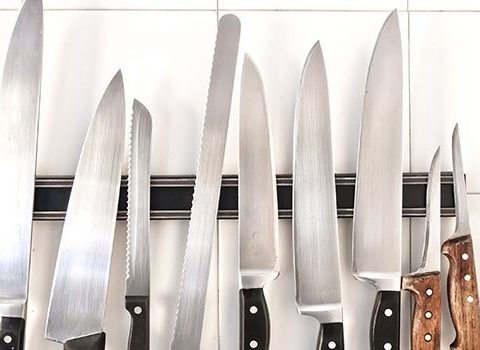Kitchen Knife Buying Guide
One of the most important tools in any kitchen is a good knife—it makes every job easier. A sharp blade with an ergonomic handle and the right weight and shape helps you prepare food quickly and safely.
If you’re thinking about upgrading to a better quality kitchen knife or replacing one that’s past its prime, follow the tips below. This buyer’s guide will help you understand what makes a high-quality knife and how to choose the best one for your cooking needs.
Types of Kitchen Knives
The first step in choosing the right knives is knowing the most common types available:
1. Chef’s Knife
- The most essential knife in most kitchens.
- Used for chopping fruits, vegetables, and cuts of meat.
- The wide, smooth blade is great for slicing, mincing, and even crushing foods like garlic or olives.
- Popular in professional kitchens and cooking shows.
- Ideal first knife for beginners.
2. Paring Knife
- Smaller and shorter than a chef’s knife.
- Perfect for delicate tasks and smaller produce.
- Great for peeling and trimming fruits and vegetables.
3. Serrated Knife
- Long, thin blade with a serrated edge.
- Designed for slicing bread, rolls, and cakes without crushing them.
- Also useful for foods with a hard exterior and soft interior like tomatoes, melons, and pineapples.
4. Santoku Knife
- Japanese-style multipurpose knife with a wide, flat blade.
- Ideal for slicing vegetables, chopping meat, and mincing herbs.
- Excellent for precise, thin slicing of produce.
5. Carving Knife
- Long, narrow blade with a sharp tip.
- Perfect for slicing large cuts of meat into thin, even portions.
- Useful for serving roasts, hams, and large poultry.
- The larger the cut of meat, the longer the blade should be.
6. Boning Knife
- Specialized knife for removing bones and trimming meat.
- Blade length usually ranges from 11 to 16 cm.
- Comes in various levels of flexibility:
- Rigid blades for large cuts and bigger bones.
- Flexible blades for smaller cuts and delicate trimming.
7. Fillet Knife
- Designed for those who frequently cook fish.
- Similar to a boning knife but thinner, longer, sharper, and more flexible.
- Perfect for precise filleting.
8. Cleaver
- Features an extremely wide, heavy blade.
- Used for cutting through small bones—ideal for poultry or ribs.
- Also great for breaking down large cuts of meat and chopping vegetables.


